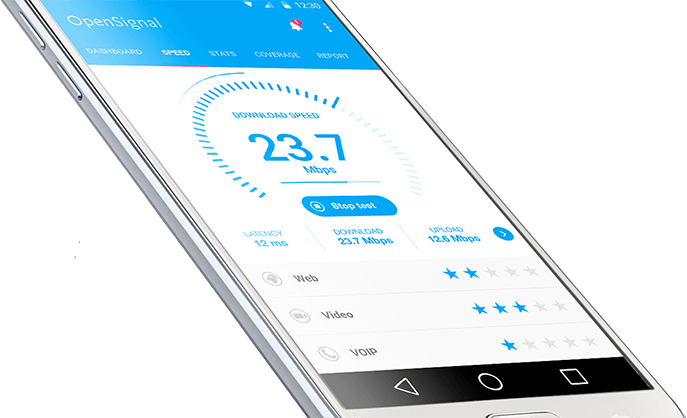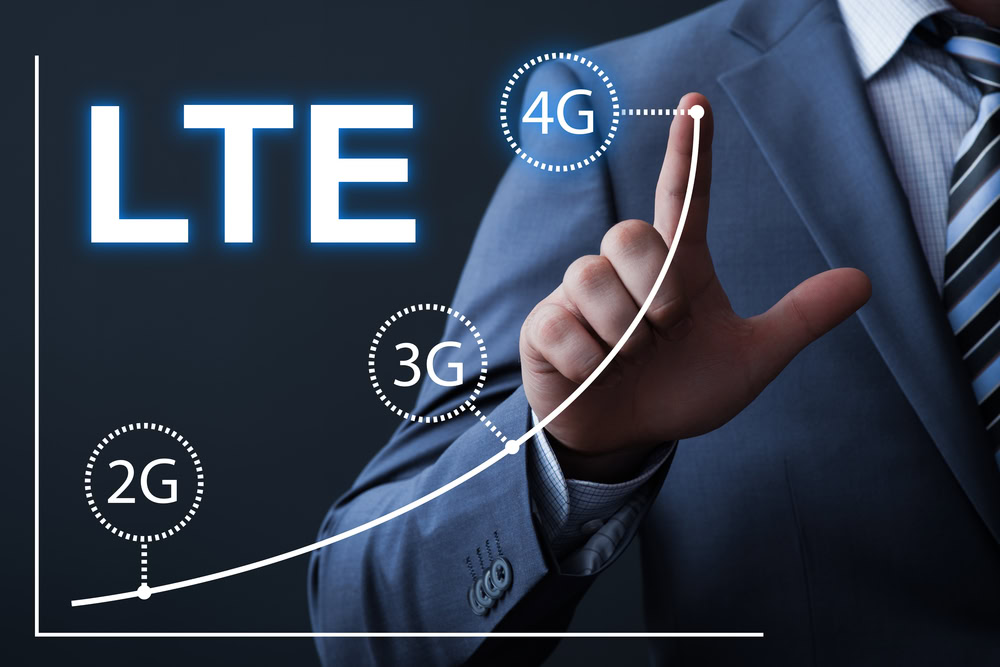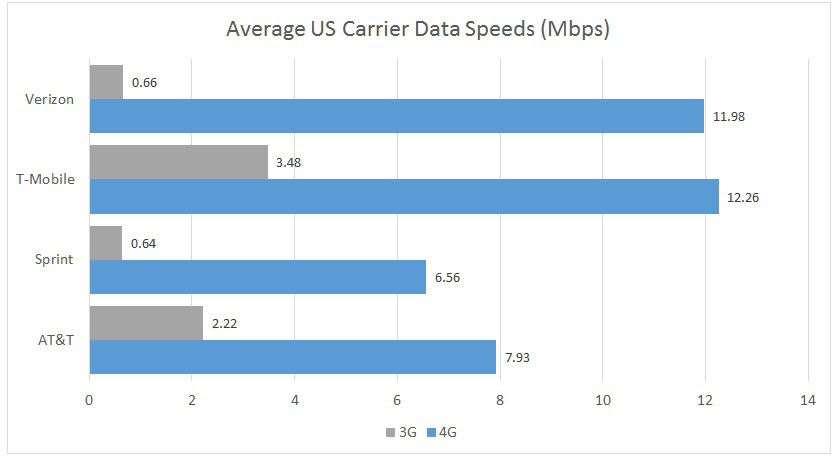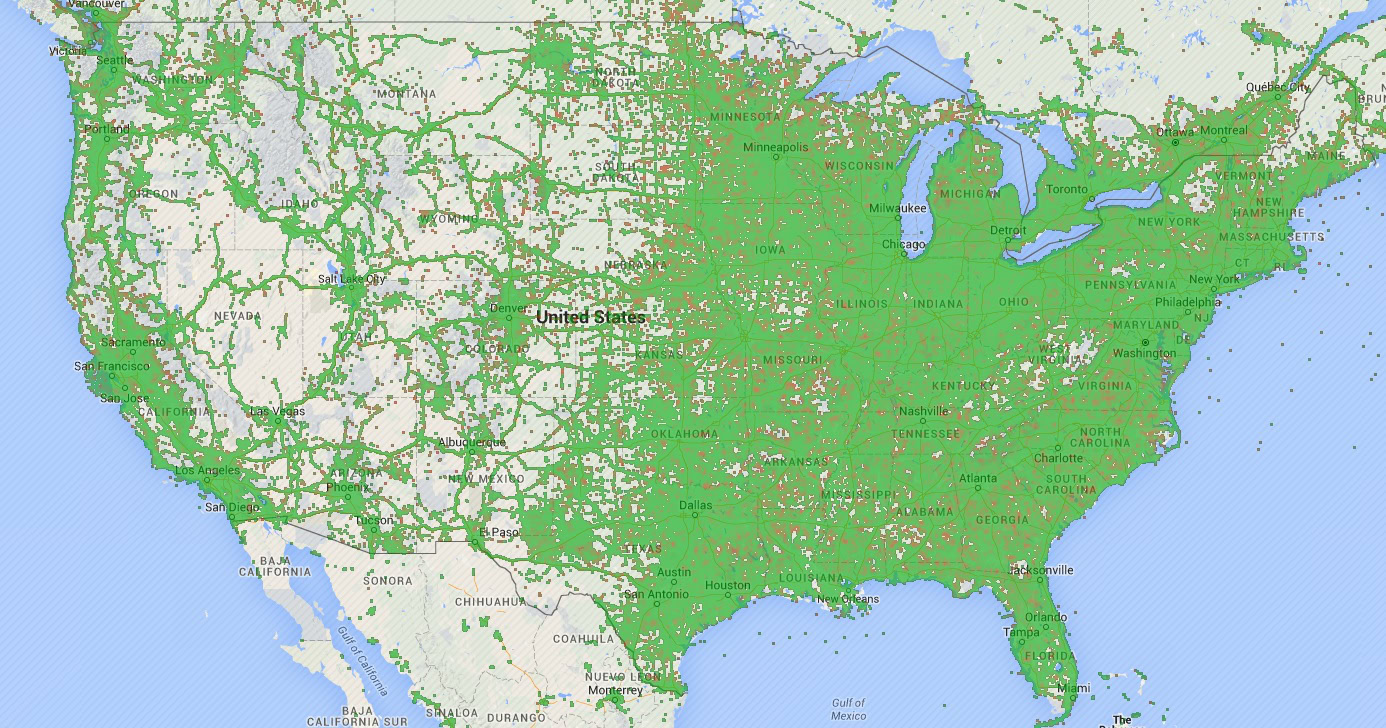Affiliate links on Android Authority may earn us a commission. Learn more.
State of Mobile Networks: USA March 2016

The US was one of the first countries to adopt the faster LTE networking standard back in 2010 and national carriers have continued to expand coverage over the vast country since then. However, over the past few years the US has fallen behind a number of other countries which adopted LTE later on, particularly when it comes to speeds. But perhaps one of the country’s big four carriers is better than the others or the national average?
Using data compiled from 181,927 OpenSignal users in the final quarter of 2015, we can see exactly which carriers are offering the fastest speeds and the best coverage for both 3G and 4G networks right across the USA. Let’s dive on in.
Data speeds
We’ll start with the statistics that everyone is probably most keenly aware of, data speeds. As we have seen from previous studies, LTE is now a common networking technology around the world, and despite being one of the earliest adopters, the USA has falling considerably far behind other nations when it comes to providing the fastest speeds.
The average 4G network speed in the US comes in at 9.9 Mbps, behind the global download average of 13.5 Mbps. If that isn’t bad enough, data from last year revealed that the top three countries for 4G LTE speeds were New Zealand, Singapore and Romania, with download speeds of 36, 33 and 30 Mbps respectively. Clearly the USA is a bit behind.

Looking more specifically at the USA’s four major carriers, that’s AT&T, Sprint, T-Mobile, and Verizon, we can see that the latter two are notably out in front when it comes to speeds. T-Mobile edges just ahead with a 12.3 Mbps average 4G network speed, while Verizon follows closely with 12.0 Mbps. So neither of the two are too far behind the global average. AT&T follows some way behind in third with 7.9 Mbps and Sprint languishes in last with just 6.6 Mbps on average.
The problem here for US network operators is that they are dealing with much more limited amounts of spectrum than many other countries. Some of the space is still tied up in 2G networks used for voice calls and there simply aren’t enough bands available to make wide use of LTE-Advanced carrier aggregation technologies that are available in other countries. The Federal Communications Commission plans to auction off a major chunk of the broadcast TV airwaves for mobile broadband use, but this might not even be made available for 4G networks and probably not any time soon either.
Things are a little different when it comes to 3G speeds though, with T-Mobile coming out as a very clear winner. The carrier managed an average 3G download speed across the US of 3.5 Mbps, following not that closely by AT&T with a speed of around 2.2 Mbps. Disappointingly, neither Sprint nor Verizon can break past the 0.66 Mbps boundary, making them considerably slower networks if you stray outside of 4G coverage.

Of course, data coverage is the best in built up cities and there’s also information available about which places have the fastest coverage. The winner is Miami with an average speed of 18.9Mbps on Verizon, followed very closely by Chicago at 18.8Mbps. New York, Los Angeles, and Atlanta also score well, with speeds averaging above 16Mbps.
When it comes to the fastest network in the USA, the crown has to go to T-Mobile this time around. Not only is the company right at the top with its average 4G speeds, but roaming off into 3G territory will still provide a nippier internet connection than any of the other three big players.
Latency
Sticking with speed for a second, the other half of improved network data speeds is latency. Latency defines how quickly a network or website can actually respond to an action over the web, which is typically quite important for things like online gaming, video calls, and voice over LTE (VoLTE). Essentially, lower latency means better quality calls over an LTE network.
When it comes to 3G coverage, the four major carriers manage a latency between 110 and 131 milliseconds, with T-Mobile performing the best on average. Moving over to 4G almost cuts the latency time in half, with speeds falling below 85ms.
Interestingly, Sprint offers the best typical 4G latency at just 66ms, but is the only carrier that doesn’t currently offer VoLTE. Sprint is followed by Verizon on 74ms, T-Mobile at 77ms, and AT&T in last with a 85ms average. However, these scores are all relatively close and most users probably won’t notice much of a difference when loading up web pages.
Network coverage
The final pieces of data covered by the report reveals which US networks offer the best coverage. Despite falling behind other countries in terms of LTE data speeds, the US still ranks among the top 10 in the world for LTE coverage, an impressive feat for such a large country.
While all of the carriers do a pretty good job at covering most people with 4G LTE coverage a lot of the time, Verizon pulls slight ahead here with a coverage score of 87 percent. AT&T and T-Mobile follow on 83 and 81 percent respectively, while Sprint falls notably behind with a score of 70 percent. T-Mobile has really closed the gap on the leader Verizon, and it’s quite a close call between the three leaders.
An important point to note is that OpenSignal’s figures are based on the proportion of time that LTE subscribers have coverage available to them, rather than calculating the result based on geographical areas covered.

It’s tough to call an absolute best network from these results, as there are a couple of pros and cons to each of the networks. Smartphone owners still using older 3G handsets will certainly be better off on T-Mobile’s network. However, it appears that both T-Mobile and Verizon offer the best overall combination of 4G LTE speeds and coverage.
Does your own experience with the USA’s big four match up with OpenSignal’s result?